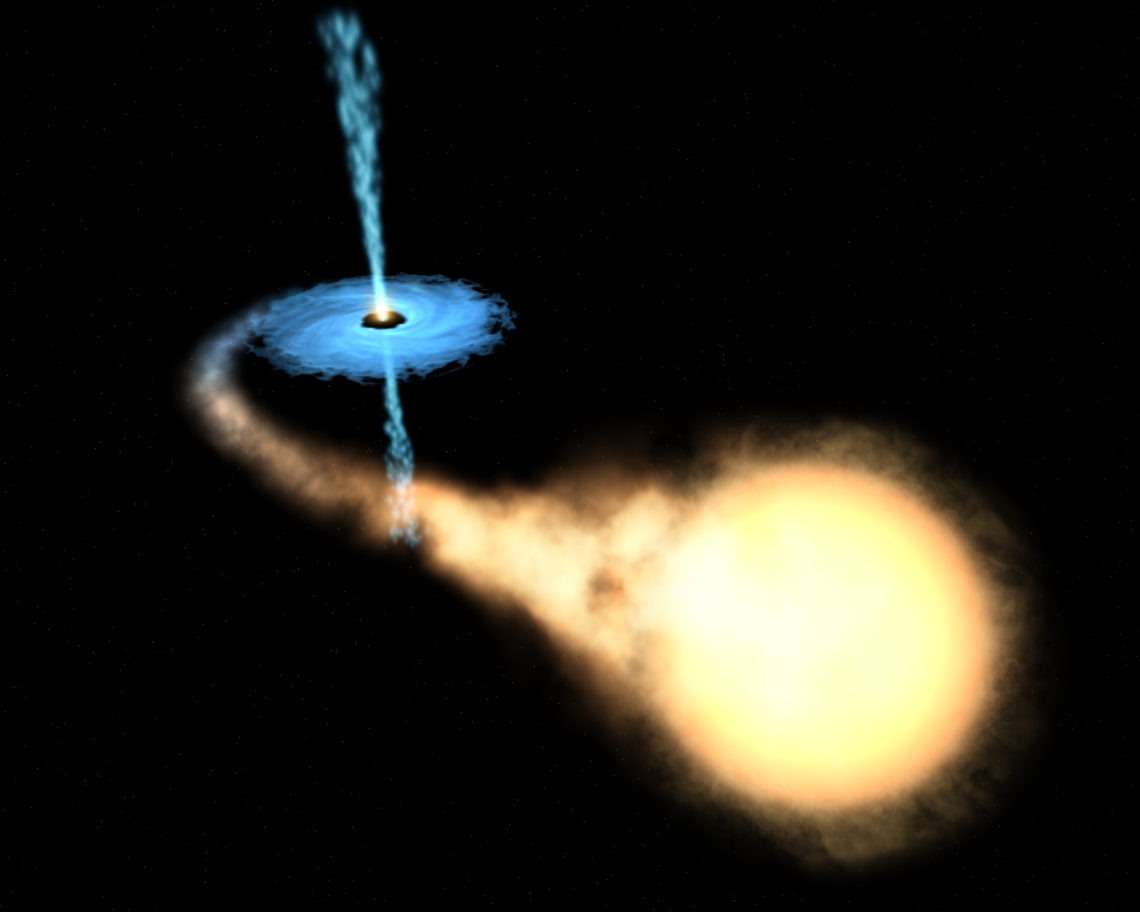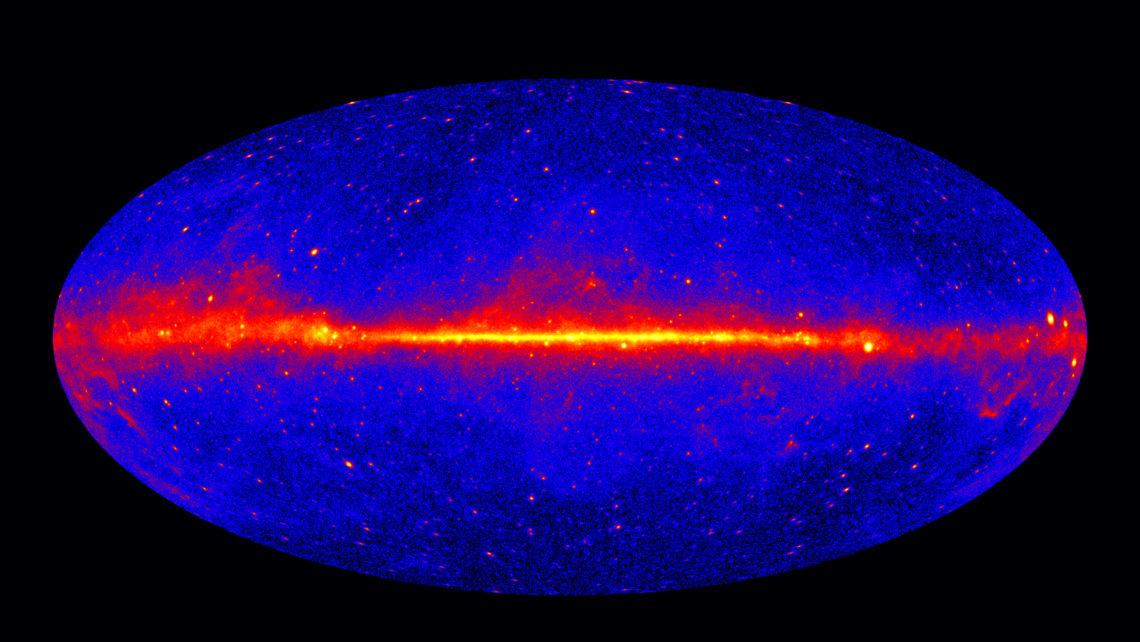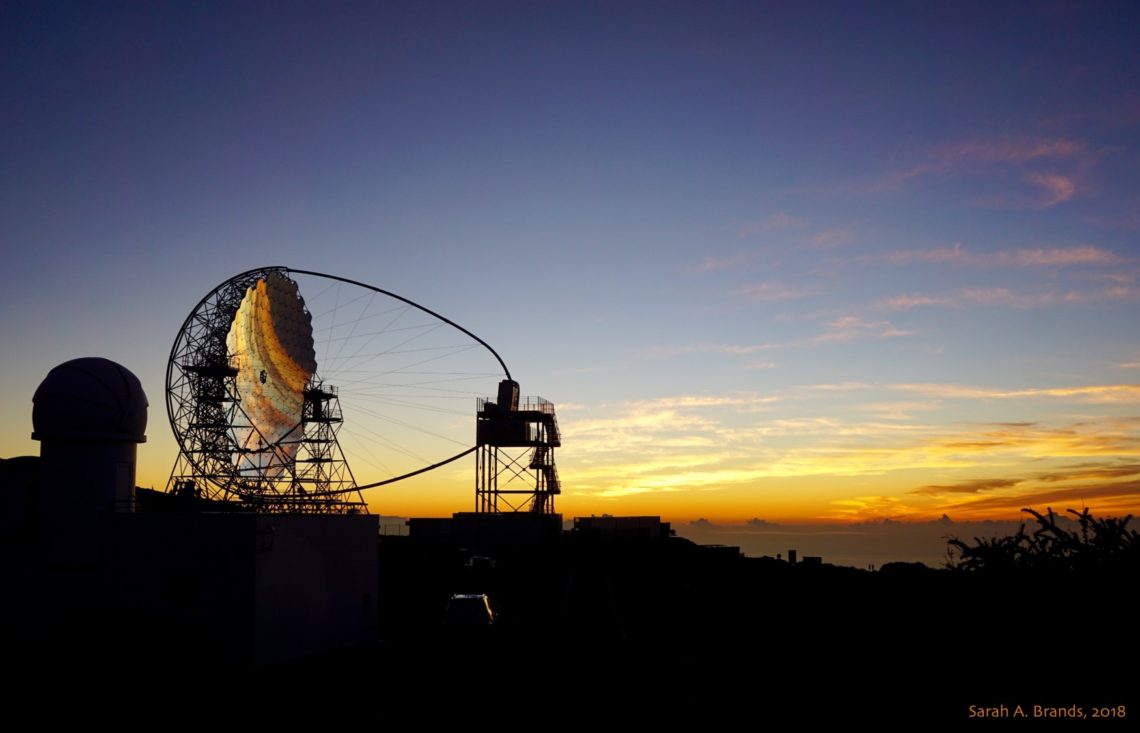For over a century, scientists have been detecting elementary particles of extraterrestrial origin, known as cosmic rays. These particles carry energy that sometimes exceeds their rest mass by a million times. The mechanism behind this energization and the environmental properties capable of such a process remains unclear. Among these cosmic rays, the dominant population is that of protons. These protons carry energy up to a million times their rest mass (i.e., up to 106 GeV, where ~1GeV is the energy carried by protons at rest), and very likely they originate in our Milky Way. Despite decades of research, the source of cosmic rays remains unclear because, while cosmic rays propagate…
Read More >>A sky full of… PeVatrons
‘Cause you’re a sky, ’cause you’re a sky full of starsI’m gonna give you my heart‘Cause you’re a sky, ’cause you’re a sky full of stars‘Cause you light up the pathI don’t care, go on and tear me apartI don’t care if you do, ooh ooooh oooooooh ooooooooohhhh Uhh sorry, I really like this song! I think if Coldplay were to sing this song today, they would write: ‘Cause you’re a sky, ’cause you’re a sky full of Pevatrons… oohh oooooooh (great tune, isn’t it?) But what are PeVatrons that would make Coldplay change their hit? Let’s travel to the distant East, somewhere in the Tibetian plateau (unless you read…
Read More >>Hadronic emission from the jets of X-ray binaries?
X-ray binaries with a Galactic black hole (BHXRBs) have recently been detected in GeV and TeV γ-rays. The radiative mechanism responsible for this emission is not yet fully understood and both leptonic and hadronic processes seem viable. In the former scenario, electrons are accelerated to high energies and dominate the non-thermal spectrum with synchrotron and inverse Compton scattering. In the latter case, protons are also accelerated as well and contribute (or even dominate) in the most energetic regime of the spectrum via neutral pion decay. In the past few years, I have been working on understanding these physical processes, focusing mostly on the hadronic ones. But allow me first to…
Read More >>The Cubic Kilometer Neutrino Telescope or KM3NeT
Can you smell this? It’s the fragrance of gunpowder! Let us then investigate the “smoking gun”! Oh, I love this expression! But why do we relate the expression, “smoking gun”, to astrophysical neutrinos? The answer is simple. We cannot observe particles being accelerated to high energies in situ. To be more precise, we cannot observe protons/nuclei gaining energy of the order of 1015 eV (or even 1020 eV sometimes) in the distant Universe. Then, how can we study these kinds of particles? Indirectly of course! Just let these protons/nuclei gain enough energy so as to be able to interact with their ambient medium and voila! The interactions of accelerated protons/nuclei…
Read More >>IceCube South Pole Neutrino Observatory
On 18 December 2010, a huge human task was accomplished. 5,160 spherical optical sensors called Digital Optical Modules (DOMs) were transported and placed under the frozen surface of Antarctica. 52 institutions from 12 countries around the globe contributed (and still do) to this collaboration. The DOMs, attached to 86 vertical “strings”, cover a cubic-kilometer area from 1,450 meters to 2,450 meters depth (see Fig. 1) and are designed to indirectly detect neutrinos. Thus the first, and so far the only, cubic-kilometer neutrino telescope was born! This telescope is called the IceCube South Pole Neutrino Observatory. Neutrinos are electrically neutral subatomic particles that interact very rarely with matter. When they do…
Read More >>Cherenkov Telescope Array (CTA)
SPOILER ALERT! We are in the year 2030 AD! So, if you do not wish to learn your future, you should stop reading now! Alright, for those of you who are still curious. Hundreds of new Supernovae have been detected. Structures in Supernova Remnants have shed light on particle acceleration, particle interactions and have also helped improve our understanding of diffusion. Powerful pulsars, both with and without surrounding wind nebulae (PWNe), have been detected on the Galactic plane shining light on the mystery of both magnetic fields and the evolution of such systems. Observations and theoretical work focusing on the closest supermassive black hole to Earth, Sgr A*, have yielded…
Read More >>Can flaring blazars be the origin of high-energy neutrinos?
Time: 22nd of September 2017, 20:54:30.43 Coordinated Universal Time. Location: cold Antarctica. A suspect has just activated the alarm. The panicked guards are running from monitor-to-monitor searching for a trace of the suspect. Trained hounds are being released smelling the air for familiar clues. Within 43 seconds the news has spread to investigators all over the world. What you are reading is not a prison break scene but a very rare event. It’s the detection of a subatomic particle called neutrino from an experiment located a thousand meters beneath the Antarctic surface. Most likely, the scene didn’t evolve as I described above but it would have been extremely cool if…
Read More >>Imaging Atmospheric Cherenkov Technique
or How to detect high energy γ rays Radiation is being produced all over the universe. This radiation can either be observed by detectors on the surface of the Earth or be absorbed by the atmosphere. As Figure 1 demonstrates, radiation at radio wavelengths and visible light can reach the terrestrial observatories located around the globe. However, infrared, X rays and γ rays cannot travel through the atmosphere and space satellites are required in order to detect them. Since the onset of space missions in the 60s and 70s, satellites have surveyed the whole sky from infrared energies up to GeV γ rays (1GeV = 10^9 eV). However, in…
Read More >>The microphysics of astrophysics: protons and electrons reveal the existence of black holes
My name is Dimitris Kantzas and I am a PhD student in Sera’s group. My research is focused on studying the multiwavelength radiation emitted in the vicinity of accreting black holes in order to better understand how these sources radiate, where exactly this radiation originates and if this radiation affects the physics and the morphology of these accreting black holes and their local environments. But what are black holes? Where are they located, and how can we detect them? Black holes are regions of the spacetime with a very strong gravitational potential that doesn’t allow anything to escape, not even light. Black holes are everywhere in the Universe and we…
Read More >>




